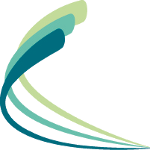Craniosacral therapy is a unique combination of detailed anatomical and physiological knowledge and a highly developed sense of palpation. This combination allows the practitioner to discover relationships between disturbed structure and function in the patient.
Andrew Taylor Still, the founder of osteopathy, identified the structure – function relationship as being key to health. If the body structure is disturbed, the body will not function well.
A reduction in function over a period of time will lead to pathological changes. For example, if a facet joint between two vertebrae becomes restricted the resultant microtrauma, local mechanical, circulation, hormone and nerve disturbance can lead to the acceleration of joint degeneration and thus arthritis.
It follows that correction of the above will preserve function and give the self-healing capacity of the body a chance to repair any damage.
The craniosacral therapist feels how the body expresses involuntary motion (IVM). This motion is characteristic of life and is a kind of expansion and contraction within the system, which is experienced as a gentle, rippling motion in the tissues. It is easily palpable and can be distinguished from other body rhythms such as heart rate and breathing. Both the rate (usually around 10 cpm) and amplitude can be determined. In addition, the motion will express many qualities, which the experienced practitioner has learned to interpret.
If the health of the patient is compromised, the general rhythm will be abnormal in rate and/or amplitude and quality. Similarly, if an individual
component such as an organ or tissue is dysfunctional, the rhythm of that organ or tissue will be disturbed.
In the case of whiplash, for example, the effect is spread throughout a number of tissues and a pattern of disturbance will be perceived.
Susan, a forty-year-old mother of two, illustrates the principles of assessment and treatment in CST. She came to see me complaining of tightness at the base of her neck and associated headaches, characterised as tension from the neck with restriction in rotation of the neck. She had previously suffered with low backache and pain in the lower sternum. Pathology had been ruled out.
On examination, she had a generally strong CRI with disturbance in two areas; the sternum and the sacrum. The sternum felt compressed posteriorly with a slightly oblique axis of rotation. When asked if she had experienced an RTA in the past she, rather surprised, replied in the affirmative. She had forgotten this when asked about accidents in the case history, a not uncommon experience.
I had made the query, as the finding was typical of an RTA whilst wearing a seatbelt.
Release of the sternum, using the gentle craniosacral technique, freed up the neck and subsequently the tension headaches subsided. In the same treatment, the sacrum was released freeing up the lower back. It seemed likely that the restriction here was caused by childbirth as the symptoms only came on after the second child was born and the position of the sacrum was characteristic of the final stage of labour.
As one can see, detailed knowledge of anatomy and physiology combined with an acute palpatory awareness allows the craniosacral therapist to make forensic judgements as to the aetiology of the presenting symptoms in patients and gives the therapist a unique take on the patient.
© Jonathan Lawrence, Turning Point Training - 01769 579079 - www.turningpointtraining.org
This article was originally published in the Choice Health & Wellbeing journal.
